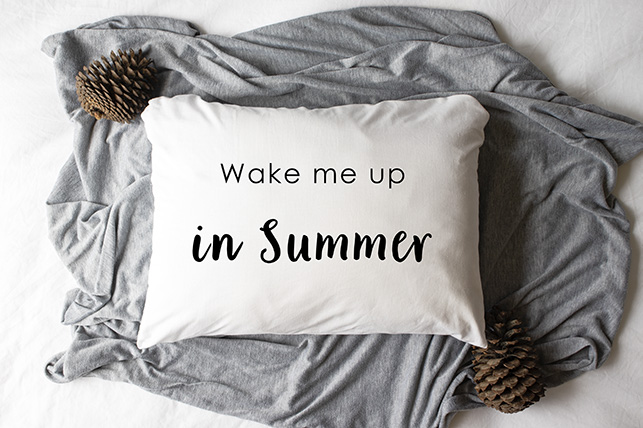During the colder and darker days of late Fall and winter, many people experience a mood shift. You may find yourself feeling more gloomy, sluggish, and less motivated to get moving. Rather than jumping out of bed on a weekend to run errands, you might choose to stay under the covers and watch a movie. For the majority of people, these winter blues do not impact their ability to function. Their work and relationships and do not suffer from the seasonal change and they are able to enjoy a good quality of life.
If your winter blues start impacting your daily life in a negative way, you may be facing Seasonal Affective Disorder (SAD). SAD is a regular seasonal pattern of major depressive episodes during the Fall and Winter months with periods of full remission, or improvement, in the Spring and Summer. These depressive symptoms include a loss of interest in normally enjoyable activities, difficulty concentrating, negative thoughts about the future, a significant change of sleep and/or appetite, and thoughts about death or suicide. The distinguishing feature between SAD and Major Depressive Disorder is the seasonal pattern that it follows.
The good news about both the winter blues and SAD is that there are a number of evidence-based treatments that can be effective in treating the symptoms. If you have a sense that your symptoms are mild and remit when the weather improves, you can try some healthy lifestyle improvements to manage your mood.
Exercise
Moderate exercise of at least 30 minutes a day has shown to provide a natural boost in mood and improved ability to cope with anxiety and depression symptoms.
Get outside
It is important to get outside when the sun is out during the darker days of Fall and Winter. Take a walk during your lunch break, try an outdoor activity like cross country skiing. Exposure to natural sunlight will help regulate your sleep cycle and improve your overall mood.
Experts agree that it is important to understand the difference between mild symptoms of winter blues and more prominent and repeated symptoms of SAD in order to appropriately respond. In fact, Dr. Kelly Rohan, an expert in SAD and Associate Professional of Psychology at the University of Vermont, urges individuals who notice a repeated and consistent shift in their mood based on the seasons to seek a referral for a psychologist rather than manage these symptoms on their own. One of the reasons for this is that swiftly treating SAD can make a big impact on an individual’s ability to function through the Fall and Winter. Seeking professional help will help you to determine which treatment for SAD is best for you.
Light therapy
Light therapy is currently a highly prescribed treatment for SAD. Light boxes, which use florescent bulbs to mimic sunlight, are used for a predetermined amount of time each day. Your “dose” of light therapy and the amount of time you sit in front of the light box is dependent upon your clinician’s recommendations.
Cognitive Behavioral Therapy (CBT)
Recent research suggests that CBT may be a more effective long term treatment than light therapy. CBT has an abundance of data to support treatment of all types of depression and incorporates both behavioral and cognitive changes to positively impact mood.
For more information about coping with all types of depression and anxiety in addition to the important ways CBT can be an effective treatment, continue to follow us here at CBT Westport.

